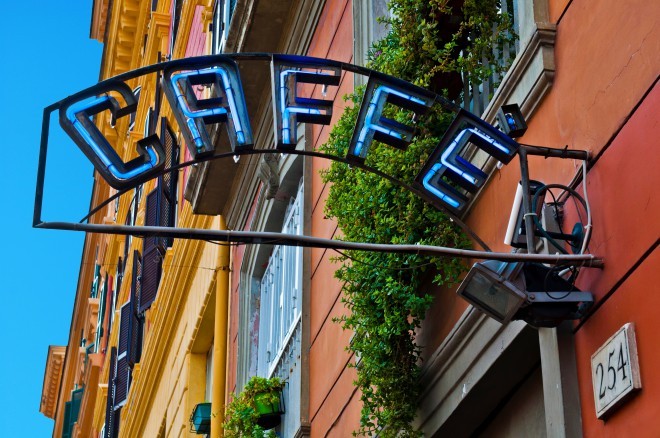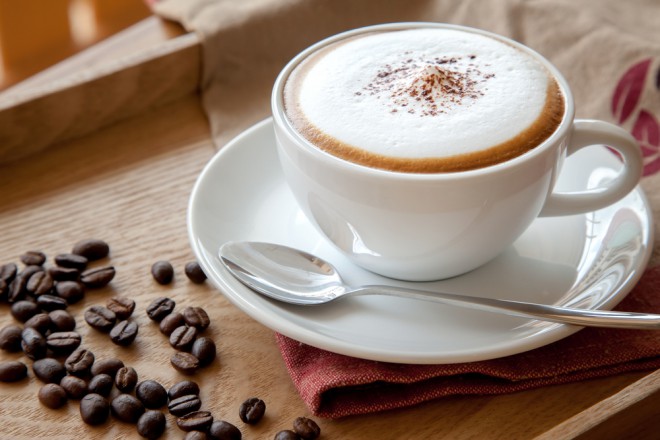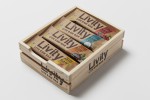Italians practically invented the way people around the world prepare, serve and drink coffee today: everything from the language (cappuccino, latte, macchiato) to espresso coffee machines (invented by Angelo Moriodno in Turin in 1884). If coffee has its spiritual home, then it must be Italy.
In Italy, foreign attempts to adapt and decorate coffee into various frappuccinos are regarded as sacrilege and the coffees stay there strictly traditional. Many international chains on the Apennine Peninsula they still don't have their own branch today, and independent coffee shops run by professional baristas are the rule rather than the exception. Some of them date back to the early 18th century. Caffè Fiorio in Turin once served coffee to Nietzsche and Count di Cavour, Gran Caffè Renzelli however, it has been run by one family since 1803.

How to order coffee?
Think of your first Italian coffee as a informal ceremonial initiation. Rule number one: don't ask for a large vanilla frappuccino with whipped cream. You can get most of your Italian coffee orders with a single word: caffè is a strong espresso (the term espresso is rarely used in Italian coffee jargon), macchiato is espresso with a splash of steamed milk, americano is espresso with added hot water, which makes the coffee a bit longer. The king of all white coffees is respected cappuccino, espresso with warm frothed milk and sprinkled with chocolate if desired.
Pause
In Italian cafes, you will rarely experience being given coffee to go, except at some train station. Whether you're in a hurry or not, you're expected to fill the cafe with the locals. Italians are not in the habit of staying in cafes for hours and hours. A coffee break is literally a break. A few bites into the puff pastry, three sips of hot espresso, a few words about the latest corruption scandal with the barista, and they're on their way.
According to tradition, cappuccino is drunk in the morning. Some cynics say it is major faux pas if you order a cappuccino after 10am.

Taste
One of the best things about Italian coffee is that no matter where you are - whether in a mountain village or in a square in Rome - it's consistent coffee quality. As much as they love their pasta al dente, they love their coffee that is heavily roasted, bittersweet flavor with brown foam or cream on top. Smooth, fruity notes and artful latte art are not very popular with Italians. Nobody has time to wait ten minutes for a barista to prepare a personalized coffee or draw a maple leaf on top of a cappuccino. Speed, with which Italian baristas work during the morning rush, is truly stunning.
Coffee versions
Although simple is usually the best in the Italian culinary world, coffee culture allows some smaller versions, some of which are regional. Caffè corretto is an espresso 'fixed' with some spirit, usually grappa, and drunk later in the day. Doppio it's a double espresso, perfectly acceptable if you're hungover or haven't slept well. Ristretto it is a short espresso with less water but just as strong. Dark Cappuccino is a cappuccino with less milk. The specialty of the Peimont region, especially of Turin, is bicerin, which has been around for 200 years. It consists of layered espresso, hot chocolate, milk and served in a glass. There is nothing different Moroccan, another Piedmontese invention that is a blend of espresso, cocoa powder and milk foam. If you are traveling around Italy with children, then order for them cioccolata calda (hot chocolate), which is dark, thick and delicious in the true spirit of la dolce vite.

In some busier bars (especially at train stations) you have to pay for your coffee in advance and then show the receipt to the barista.
Italians drink coffee in smaller quantities. Seven or eight espressos a day is not unusual.
Coffee in Italy is surprisingly not expensive; if you paid more than two euros for it, they brought you around.
Which Italian city has the best coffee is a debate that could reignite the Risorgimento, but rarely will you find as many historic cafes as Turin and Trieste.






